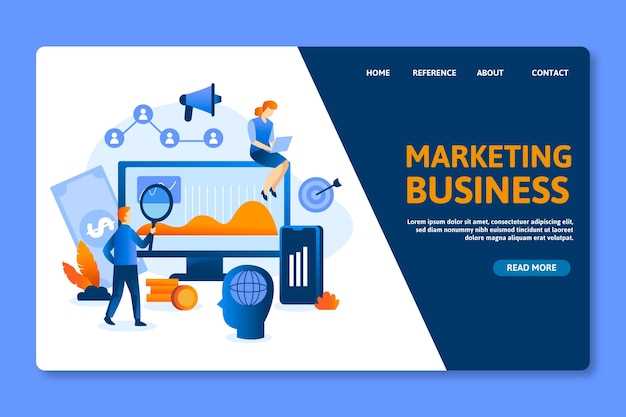
As the digital landscape continues to evolve, it has become increasingly crucial for businesses to establish a strong online presence. In today’s competitive market, simply having a website or social media accounts is not enough to stand out from the crowd. To truly engage with your target audience and drive meaningful results, you need to harness the power of effective content marketing strategies.
Content marketing is the art of creating and distributing valuable, relevant, and consistent content to attract and retain a clearly defined audience. It goes beyond traditional advertising methods by providing information, entertainment, and value to your audience, establishing your brand as a trusted authority in your industry. By utilizing a variety of mediums, such as blog posts, videos, infographics, and podcasts, you can captivate your audience and keep them coming back for more.
One of the key elements of successful content marketing is understanding your target audience. By conducting thorough research and analysis, you can gain valuable insights into their needs, preferences, and pain points. This knowledge allows you to tailor your content to address their specific challenges and provide solutions that resonate with them on a deeper level.
Another essential aspect of effective content marketing is storytelling. Humans are naturally drawn to stories, and incorporating storytelling techniques into your content can help you connect with your audience on an emotional level. By crafting compelling narratives that evoke emotions and spark curiosity, you can create a lasting impact and build a loyal following.
In conclusion, by implementing powerful content strategies, you can enhance your online presence and establish your brand as a thought leader in your industry. By understanding your audience, telling captivating stories, and delivering valuable content consistently, you can engage with your target market, drive traffic to your website, and ultimately boost your business’s success in the digital realm.
Understanding Your Target Audience for Effective Content Marketing
When it comes to creating successful content marketing strategies, one of the key factors to consider is understanding your target audience. By gaining a deep understanding of who your audience is, what they are interested in, and what motivates them, you can tailor your content to resonate with them and effectively engage them.
Identifying your target audience involves more than just demographics such as age, gender, and location. It requires delving into their psychographics, which include their values, beliefs, interests, and behaviors. By understanding these aspects, you can create content that speaks directly to their needs and desires.
One effective way to understand your target audience is by conducting market research. This can involve surveys, interviews, and analyzing data to gain insights into their preferences and behaviors. By gathering this information, you can develop buyer personas that represent your ideal customers and guide your content creation process.
- Start by identifying the goals and challenges of your target audience. What are they trying to achieve, and what obstacles do they face?
- Next, determine the channels and platforms your audience uses to consume content. Are they active on social media, do they prefer email newsletters, or do they rely on search engines?
- Consider the language and tone that resonates with your audience. Do they prefer a formal or informal style? Are there specific keywords or phrases they use?
- Explore the content formats that appeal to your audience. Do they prefer articles, videos, podcasts, or infographics?
- Lastly, analyze the content that your competitors are producing for a similar audience. What gaps can you identify, and how can you differentiate your content?
By understanding your target audience, you can create content that not only attracts their attention but also builds trust and loyalty. Remember, effective content marketing is about delivering value to your audience and establishing a meaningful connection with them.
Creating Engaging and Relevant Content for Your Audience
When it comes to connecting with your target audience, creating engaging and relevant content is crucial. By crafting content that captures their attention and resonates with their needs and interests, you can establish a strong online presence and build meaningful relationships with your audience.
One key aspect of creating engaging content is understanding your audience’s preferences and interests. By conducting thorough research and analysis, you can gain insights into their demographics, behaviors, and motivations. This knowledge will enable you to tailor your content to their specific needs, ensuring that it is both relevant and valuable to them.
Another important factor in creating engaging content is using a variety of formats and mediums. While written articles and blog posts are effective, consider incorporating other forms of content such as videos, infographics, podcasts, and interactive elements. This diversity will not only cater to different learning styles but also make your content more visually appealing and engaging.
In addition to format, the tone and style of your content play a significant role in capturing your audience’s attention. Use language that is relatable and conversational, avoiding jargon or overly technical terms that may alienate or confuse your readers. By adopting a friendly and approachable tone, you can establish a connection with your audience and make them feel more comfortable engaging with your content.
Furthermore, storytelling is a powerful tool for creating engaging content. By weaving narratives and personal anecdotes into your content, you can evoke emotions and create a deeper connection with your audience. Stories have the ability to captivate and inspire, making your content more memorable and shareable.
Lastly, don’t forget to encourage interaction and feedback from your audience. By incorporating calls-to-action, asking questions, and inviting comments and discussions, you can foster a sense of community and engagement. This not only enhances the overall user experience but also provides valuable insights and feedback that can help you refine and improve your content strategy.
- Understand your audience’s preferences and interests through research and analysis.
- Utilize a variety of formats and mediums to cater to different learning styles.
- Adopt a relatable and conversational tone in your content.
- Incorporate storytelling to evoke emotions and create a deeper connection.
- Encourage interaction and feedback from your audience to foster engagement and improve your content strategy.
Utilizing SEO Techniques to Optimize Your Content for Search Engines
Enhancing the visibility and discoverability of your online material is crucial for attracting a wider audience and increasing your online presence. One effective way to achieve this is by employing search engine optimization (SEO) techniques to optimize your content for search engines.
SEO involves implementing various strategies and tactics to improve the ranking of your web pages in search engine results pages (SERPs). By understanding the algorithms and criteria used by search engines, you can tailor your content to meet their requirements and increase its chances of appearing higher in the search results.
One fundamental aspect of SEO is keyword research. By identifying the relevant keywords and phrases that your target audience is likely to use when searching for information related to your content, you can strategically incorporate them into your content. This helps search engines understand the relevance and context of your material, making it more likely to be displayed to users searching for those specific terms.
In addition to keyword optimization, it is essential to focus on creating high-quality and engaging content. Search engines prioritize content that provides value to users, so it is crucial to produce informative, well-written, and unique material. By offering valuable insights, answering common questions, or providing solutions to problems, you can establish yourself as an authoritative source and attract more organic traffic to your website.
Another crucial aspect of SEO is optimizing your website’s structure and technical elements. This includes ensuring your website is mobile-friendly, improving page loading speed, using descriptive meta tags, and optimizing images and multimedia elements. These technical optimizations not only enhance the user experience but also make it easier for search engines to crawl and index your content.
Furthermore, building high-quality backlinks to your content is an effective SEO strategy. Backlinks are links from other reputable websites that direct users to your content. Search engines consider backlinks as a vote of confidence, indicating that your content is valuable and trustworthy. By actively seeking opportunities to acquire backlinks from authoritative sources, you can improve your website’s credibility and visibility in search engine rankings.
In conclusion, by utilizing SEO techniques to optimize your content for search engines, you can significantly enhance your online presence and attract a larger audience. Through keyword research, creating high-quality content, optimizing technical elements, and building backlinks, you can improve your website’s visibility in search engine results and increase organic traffic to your site.
Leveraging Social Media Platforms to Amplify Your Content Reach
In today’s digital landscape, the power of social media cannot be underestimated when it comes to expanding the reach of your content. By strategically utilizing various social media platforms, you can effectively amplify your content and connect with a wider audience. In this section, we will explore the different ways you can leverage social media to maximize the visibility and impact of your content.
1. Engaging with Your Target Audience

One of the key advantages of social media is its ability to facilitate direct interaction with your target audience. By actively engaging with your followers, you can build a strong online community and foster meaningful relationships. Responding to comments, addressing queries, and participating in discussions not only helps you establish credibility but also encourages user-generated content and word-of-mouth promotion.
2. Creating Shareable and Viral Content

Social media thrives on shareable and viral content. By crafting compelling and visually appealing content, you increase the likelihood of it being shared across various social media platforms. Incorporating eye-catching images, videos, infographics, and interactive elements can significantly enhance the shareability of your content. Additionally, utilizing trending hashtags and participating in viral challenges or conversations can help your content gain traction and reach a wider audience.
| Social Media Platform | Key Features |
|---|---|
| Large user base, diverse content formats, targeted advertising | |
| Real-time updates, hashtags, direct engagement | |
| Visual storytelling, influencers, hashtags | |
| Professional networking, industry-specific content, B2B opportunities | |
| YouTube | Video content, tutorials, vlogs, monetization options |
These are just a few examples of popular social media platforms that can be leveraged to amplify your content reach. Each platform offers unique features and advantages, so it’s important to identify which ones align with your target audience and content goals.
In conclusion, social media platforms provide a powerful avenue for expanding the reach of your content. By engaging with your target audience and creating shareable content, you can effectively amplify your online presence and connect with a wider audience. Remember to tailor your approach to each platform and consistently analyze and optimize your social media strategies to maximize the impact of your content.
Building Relationships with Influencers to Enhance the Visibility of Your Content
In today’s digital landscape, establishing strong connections with influencers can significantly amplify the reach and visibility of your content. By collaborating with influential individuals in your industry, you can tap into their established networks and gain access to a wider audience. This section will explore effective strategies for building relationships with influencers and leveraging their influence to increase the visibility of your content.
1. Identify Relevant Influencers: Begin by identifying influencers who align with your brand values and target audience. Look for individuals who have a significant following and are actively engaged in your industry. Consider factors such as their expertise, credibility, and the relevance of their content to ensure a fruitful partnership.
2. Engage with Influencers: Once you have identified potential influencers, start engaging with them on social media platforms and their blogs. Leave thoughtful comments on their posts, share their content, and tag them in relevant discussions. By actively participating in their online communities, you can establish a genuine connection and demonstrate your interest in their work.
3. Offer Value: To capture the attention of influencers, it is crucial to offer something of value in return. This could be in the form of high-quality content, exclusive insights, or access to your network. By providing influencers with valuable resources, you can establish yourself as a reliable and trustworthy partner, making them more likely to collaborate with you.
4. Collaborate on Content: Collaborating with influencers on content creation can be mutually beneficial. Consider co-creating blog posts, videos, or podcasts that showcase both your expertise and the influencer’s unique perspective. This not only helps in expanding your content’s reach but also allows you to tap into the influencer’s expertise and credibility.
5. Leverage Influencer Networks: Once you have established a relationship with influencers, leverage their networks to increase the visibility of your content. Encourage them to share your content with their followers, mention your brand in their posts, or participate in joint promotional activities. This can significantly enhance the reach and credibility of your content.
6. Nurture Long-term Relationships: Building relationships with influencers should not be a one-time effort. Continuously nurture these connections by staying engaged, providing ongoing value, and supporting their initiatives. By maintaining long-term relationships, you can ensure a consistent boost in the visibility of your content.
By strategically building relationships with influencers, you can tap into their influence and expand the visibility of your content. Remember to approach these partnerships with authenticity, offer value, and nurture long-term connections to maximize the benefits for both parties involved.
Measuring and Analyzing Your Content Performance for Continuous Enhancement
In the realm of digital marketing, it is crucial to constantly evaluate and analyze the effectiveness of your content to ensure its continuous improvement. By measuring and analyzing your content performance, you can gain valuable insights into what works and what doesn’t, allowing you to refine your strategies and optimize your online presence. In this section, we will explore the importance of measuring and analyzing your content marketing efforts and provide actionable steps to enhance your performance.
Why Measure and Analyze Your Content Performance?
Measuring and analyzing your content performance is essential for several reasons. Firstly, it allows you to assess the impact of your content on your target audience. By understanding which pieces of content resonate the most with your audience, you can tailor your future content to meet their needs and preferences.
Secondly, measuring and analyzing your content performance enables you to identify any gaps or areas for improvement. By examining metrics such as engagement rates, click-through rates, and conversion rates, you can pinpoint which aspects of your content may be underperforming and take steps to enhance them.
Furthermore, measuring and analyzing your content performance provides you with valuable data that can inform your overall content marketing strategy. By identifying trends and patterns in your content’s performance, you can make data-driven decisions and allocate your resources effectively.
Steps to Measure and Analyze Your Content Performance
To effectively measure and analyze your content performance, follow these steps:
- Establish clear goals and objectives: Define what you want to achieve with your content marketing efforts. Whether it’s increasing brand awareness, generating leads, or driving conversions, having clear goals will help you determine the metrics to focus on.
- Identify relevant metrics: Choose the key performance indicators (KPIs) that align with your goals. These could include website traffic, social media engagement, email open rates, or time spent on page.
- Utilize analytics tools: Make use of various analytics tools, such as Google Analytics, to track and measure your chosen metrics. These tools provide valuable insights into your content’s performance and audience behavior.
- Analyze the data: Regularly review and analyze the data collected from your analytics tools. Look for trends, patterns, and correlations to identify areas of improvement and success.
- Make data-driven adjustments: Based on your analysis, make data-driven adjustments to your content marketing strategy. This could involve refining your content topics, formats, distribution channels, or targeting methods.
- Continuously monitor and iterate: Content marketing is an ongoing process, so it’s important to continuously monitor and iterate your strategies. Regularly measure and analyze your content performance to ensure you are consistently improving and adapting to your audience’s needs.
By consistently measuring and analyzing your content performance, you can optimize your content marketing efforts, enhance your online presence, and achieve your desired goals. Remember, data-driven decision-making is key to continuous improvement in the ever-evolving digital landscape.






